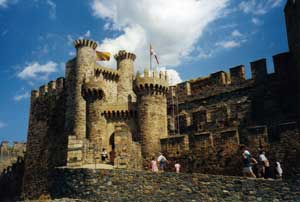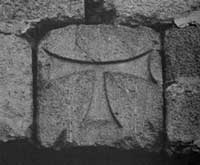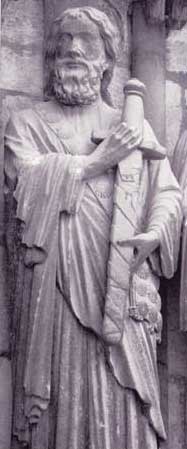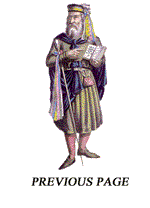
Maître Jacques

The society of the Jacques was composed of four corporations:
peasants and artisans (batons)
merchants and financiers (coins)
warriors and princes (swords)
seers and healers (cups)

Ponferrada, fortress constructed in the 13th century by the Templars, ostensibly to protect pilgrims, but above all a southern outpost against the Arab occupants of southern Spain.

Templar mark at Ponferrada
The Christian Middle Ages, preoccupied by the need to dilute and “rehabilitate” all pagan energies, assigned each of these corporations to an aspect of a Christianized “Saint” Jacques:
Saint Jacques du baton (for the builders and stonecutters)
Saint Jacques de la coupe (a reference to the Grail)
Saint Jacques des deniers (coins: patron of all who earned a living by feeding and housing the travelers)
and of course the chivalrous patron saint charged with protecting the pilgrims: Saint Jacques de l’Épée (statue at right from Amiens Cathedral).

Towards the end of the 13th century, with the coming of the Inquisition, the crusade against the Cathars and the subsequent demise of the Order of the Temple, the people of the Jacques went into hiding. Some groups took refuge in Cilicie (on the Mediterranean coast opposite Cyprus).
In the rout of the Frankish kingdoms of the Middle East, the last to fall (to the Mamelukes in 1375) was Cilicie. Forced to return to the Christian world or convert to Islam, some stayed and converted, forming the sufi naqshbandi order of image-makers. The interlacings seen in some of their work are astonishingly reminiscent of Celtic designs Others went to northern Italy, and it is to them that we owe the adventure of the Tarot.Some also returned to southwestern France, where many Jacques already resided. There, they became known as “cagots”.
The situation of the cagots resembles that of the untouchables in India, or the Jews in the ghetto…They lived in communities on the outskirts of towns and villages and of course married within their group. They were stonecutters, carpenters, healers. Their wives were weavers. They wore, sewn in red cloth to the left shoulder, the sign of a goose’s foot: the pé d’auque. In spite of being generally ostracized, they were protected by the local lords. These noblemen knew that only the cagots were able to master applied geometry based on divine proportion and the golden mean, and with it correctly balance a bridge or repair the timbering of the chateau roof. Over the centuries they were increasingly mistrusted, finally denounced as lepers and idiots. By the time of their ultimate cultural obliteration in around 1730, calumnious rumors held them to have made Christ’s cross, to be responsible for assassination of Hiram and guilty of the disaster at the Temple of Jerusalem, where they were said to have done shoddy work.
All transmission of knowledge, including that discreetly borne by the Tarot, ceased. The Tarot as support continued to exist only in the form of denatured copies or virtual re-creations, all ignorant of the traditional knowledge the game was meant to convey. The last grand master was the man who engraved the Tarot edited by Nicolas Conver in 1760.

